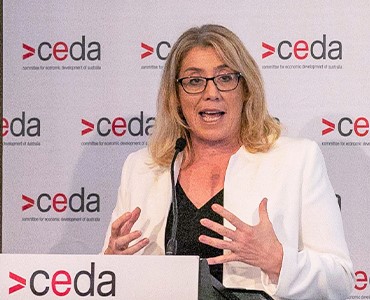Speaking at a CEDA event in Perth, WA Minister for Transport and Planning, the Hon. Rita Saffioti MLA, said that communities should enable people to participate in the economy and society, as well as be connected.
 ‘We’re here to create a better future, a better city and better suburbs for our children and grandchildren to live in.
‘We’re here to create a better future, a better city and better suburbs for our children and grandchildren to live in.
If I look at my portfolios of planning and transport, the overall vision is connected, vibrant communities.
It’s hard infrastructure, it’s planning regulations and legislation, but together they enable enormous outcomes.
It allows people to be connected to workplaces, it enables people to be connected to education opportunities, it gives people the ability to connect to others and basically create communities that support each other and assist in making sure that everyone can participate in our modern economy.
Our plan is about giving people choices and making sure that if people want to drive they can drive, but if they want to catch public transport then we have those opportunities there for them.
It’s about giving people choices about how they move around our city and suburbs.
A lot of what we’re trying to do as part of our planning reform, and as part of what we do with Metronet, is giving people the opportunity to have housing choices across the suburbs too.
If you want to age in place you have that opportunity to be able to downsize and live in the community that you know and love; or if you’re a younger person wanting to get into the housing market, that you have those opportunities.
A lot of what we’re driving is making sure you have good choices to move around our cities and suburbs, but also choices in how and where you live and that’s fundamentally important.
So what do we know?
800,000 new homes will be required by 2050, with 380,000 to be built in strategic in-fill locations.
Avoidable congestion costs are forecast to increase from $2.1 billion to $5.7 billion per annum by 2030.
The cost of providing public transport infrastructure to homes in the outer suburbs is more than double of that being provided in the in-fill areas.
Transit-oriented development promotes walking and cycling. Thirty minutes of daily activity could help reduce the public health burden by 26 per cent.
Much of what we’re doing in relation to how we plan for our roads and how we plan for our rail system is about addressing these challenges.
Making sure we have density in the right places and making sure that when we build our infrastructure we’re not only concerned about the rail lines we lay, but the communities that we create.
As part of the Metronet development, new hubs will be created across the city.
We’re redeveloping the Bayswater train station - a $146 million commitment.
We’re wanting to give planning certainty and work with the local community and local council in relation to encouraging development around that area.
It’s part of the overall vision for the Forrestfield rail line and also the Ellenbrook rail line, we’re working on the provision of the infrastructure, the development of the plans, working with council, working through state government and working with the community with the aim of getting a plan that gives density in the appropriate places, supporting small business and also of course creating new opportunities for housing in that area.
This is the model that we’ll be rolling out and rolling out across the suburbs in relation to the Forrestfield train station precinct and other train station precincts.
State government gives the investment certainty and has the infrastructure plan and we encourage the private sector through planning certainty and with all the right signals to come and invest and help state government deliver not just good in-fill, but also really good amenity and precinct planning.’
Event presentations
Hon. Rita Saffioti MLA, Minister for Transport; Planning, Government of Western Australia
MP3 |
PDF
Peter Woronzow, Main Roads
MP3 |
PDF
Moderated discussion
MP3
Delegate handout
PDF